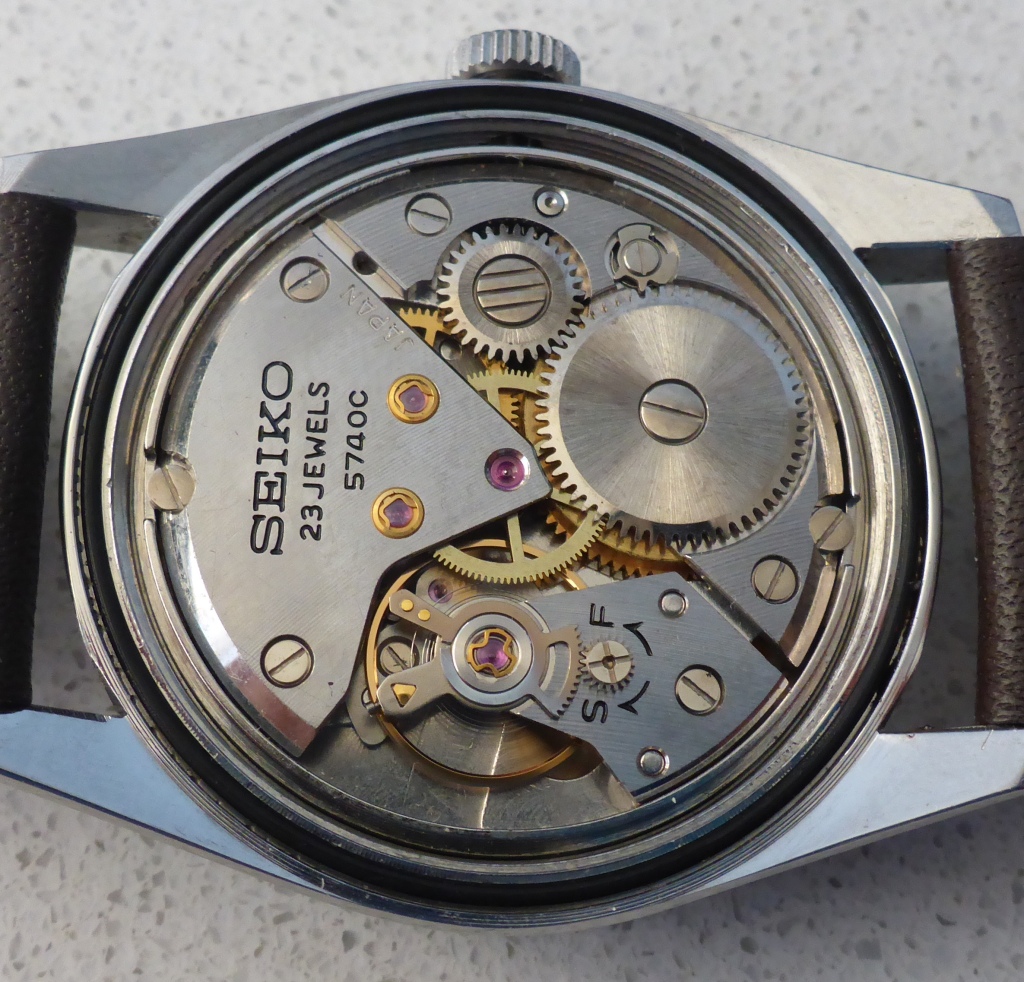A pure Experiment
The accuracy of a watch depends on many factors; one of those is beat rate, which is the frequency at which the balance wheel oscillates. Or, put more simply, the faster it ticks, the more accurate it potentially is. For over a century, virtually all mechanical watch movements performed at a steady 18000 beats per hour (2.5 hertz). In the early 60s, manufacturers started to increase the bph slightly to 19800 or even 21600 (3 hertz). 21600 bph soon became the standard and remains so to this day.
But, there were forays into the high tech area of 28800 (4 hertz) and finally, in 1966, Girard Perregaux broke through to the 5 hertz mark (36000 bph) in developing the automatic 32A movement.
Seiko answered the Swiss achievement a year later, in 1967 with this, – the 5740C manual wind movement.
The Girard Perregaux effort was a an upgrade of the generic, manual wind AS 1687/1688, made automatic by the joint effort of watch companies Doxa, Eberhard, Favre-Leuba, Girard-Perregaux and Zodiac. Whereas the Seiko 5740C was developed completely in house by Seiko.

So here we have the Lord Marvel 36000. So unpretentious in its un Seiko absence of features, not even a date! And, on a leather strap! Maybe Seiko wanted to market the fact that it was one of only two watches that beat at such a furious rate and, therefore, able to be adjusted to run very accurately. The precise accuracy was never specified but I know from experience that high beat movements, in good condition and recently serviced, can be adjusted to vary less than +/-5 seconds a day.
There is a very subtle elegance to the style. It’s not big, just 35mm case. The dial, hands and markers are superbly finished to a standard that Seiko was to become renown for. The case is a little bulky, very robust with a large crown for easy winding. The lugs are long to accommodate a leather strap, there was no metal option.

It sold in Japan for ¥14,000. That was about AU$165. At the time, the average wage in Australia was $57 per week. So, who would spend almost three times the average wage on a watch that was very basic and Japanese? This watch had no features apart from its accuracy and was more costly than a prestigious Swiss watch. Needless to say, it failed in the marketplace. But after all, this watch was the 36000bph experiment in its purest form. Once Seiko knew the 5740C was a technical success, they were able to market the hi-beat 36K Grand Seiko line.

Simple elegance at its best!
hi Rob, great article, really appreciate knowing the history of this classic.
Gianni